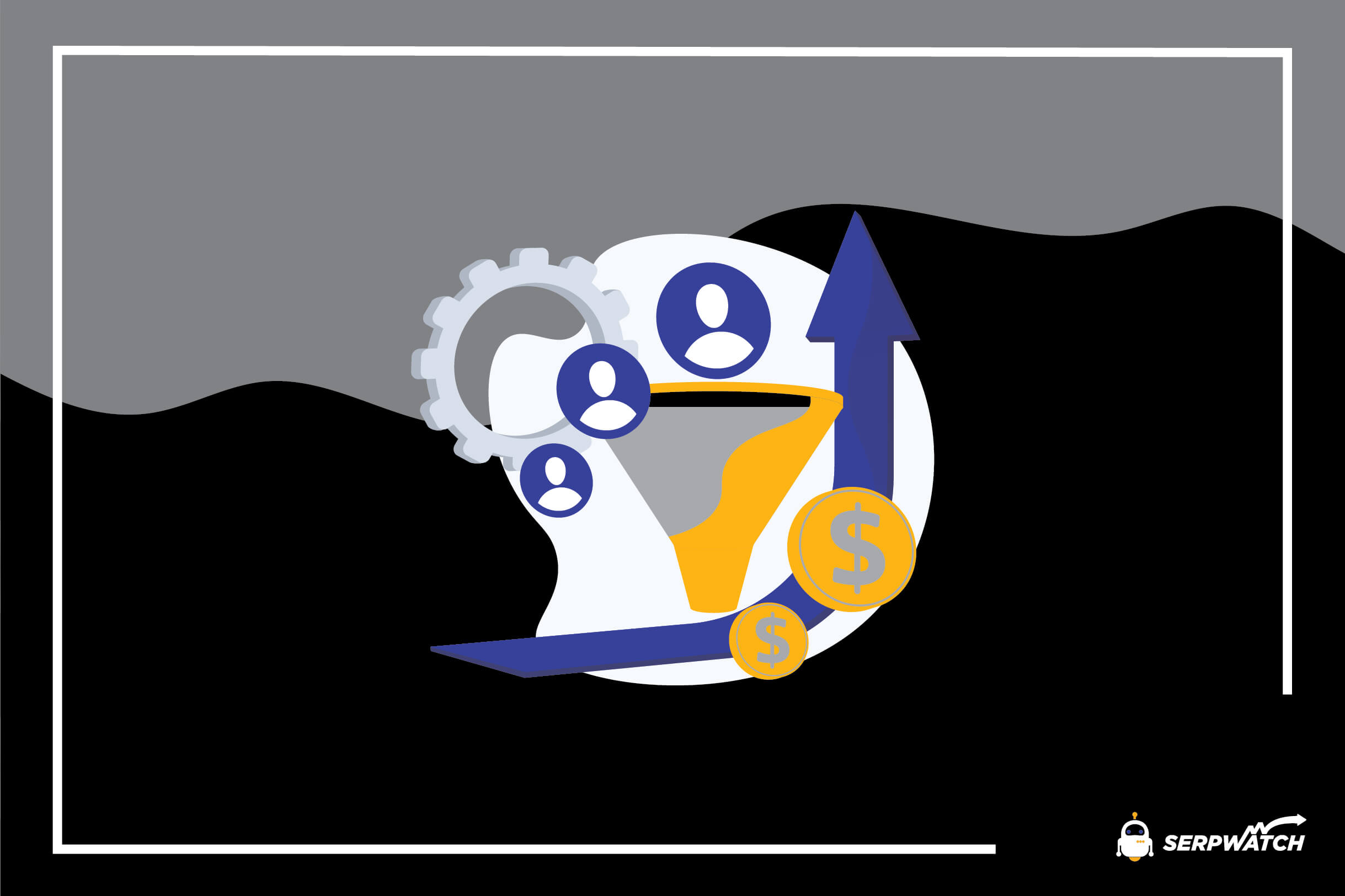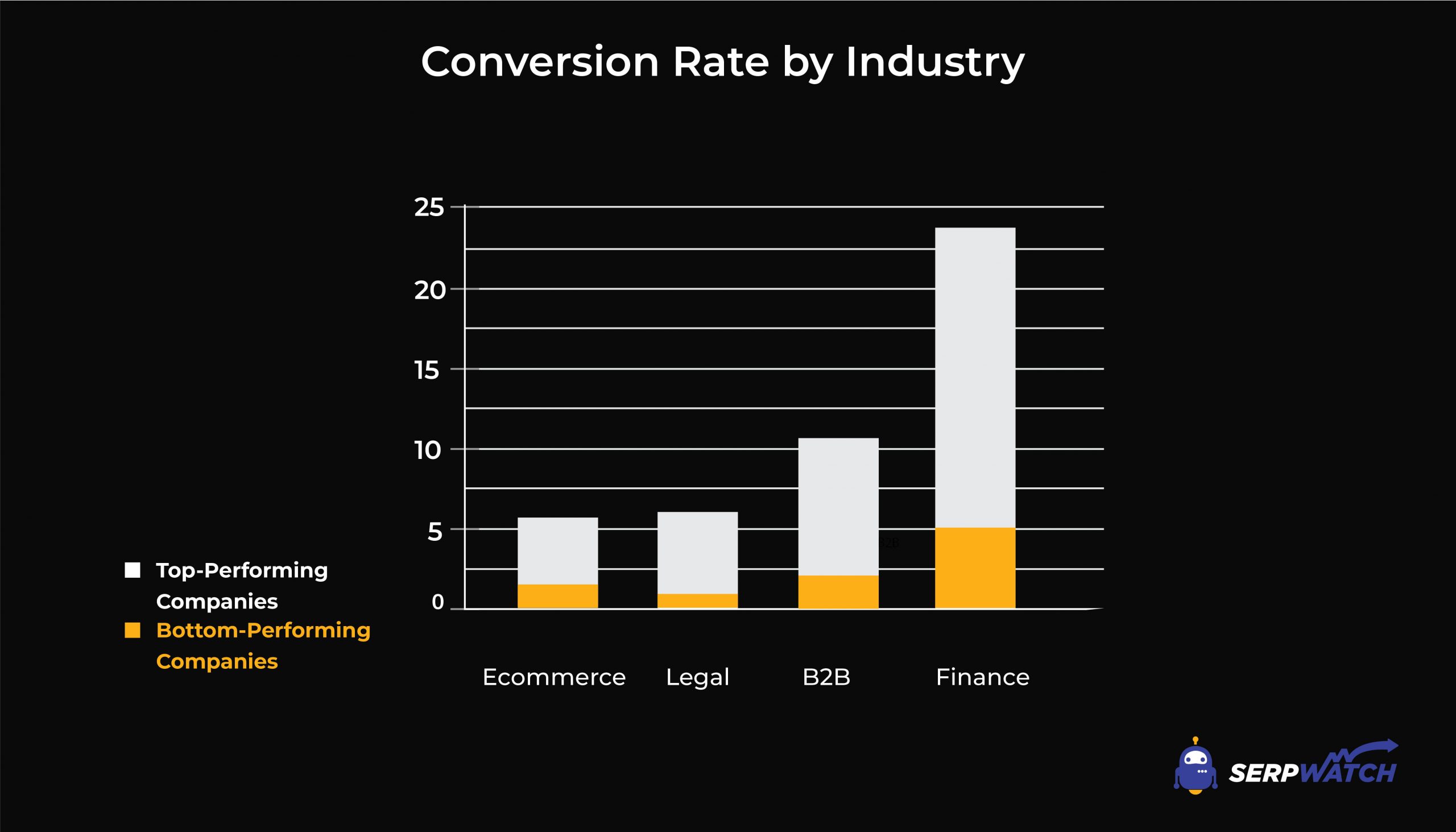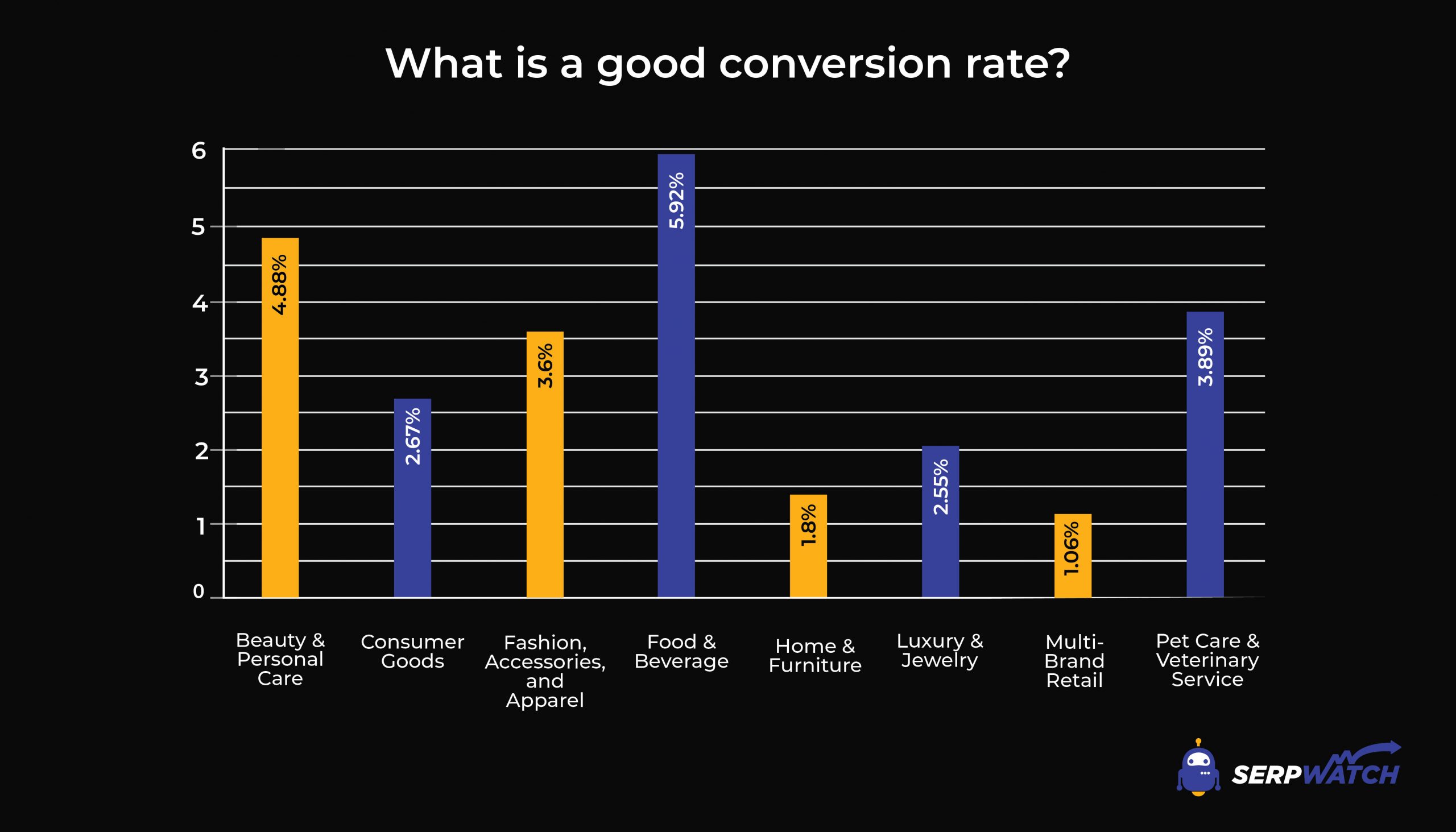
CRO Statistics to Boost Your Sales in 2024

Conversion rate optimization (CRO) is a series of steps that increase the percentage of users who perform an action on the website. This includes requesting a quote, adding products to the cart, signing up for email services, etc.
Find out how important it is to master conversion rate optimization for a successful digital marketing strategy with this interesting data.
CRO Statistics | Editor’s Choice
- The conversion rate for all advertisers is between 1.84% and 5.01% on average.
- Online retail has a conversion rate of 3% on average.
- Landing page conversion rates are around 2.35%.
- In 2020, media and publishing had a B2B lead conversion rate of 10% on average.
- The conversion rate for SEO across all industries is 2.4%.
- Inbound marketing increases conversion rates for an average site from 6% to 12% in total.
- The US website conversion rate via tablet for ecommerce was 3.32% on average in Q2 of 2020.
- The average Google Ads search conversion rate increased by 17%.
General CRO Statistics
If a website has a minimal number of visitors who convert, conversion rate optimization is essential. There are various reasons why visitors don’t make purchases, subscriptions, and contact form submissions. Identifying the problem is the first step in the process that leads to better sales.
This is where CRO steps in—to improve user experience, content and web design, customer satisfaction, offers, and prices. These improvements allow website owners to nurture customer loyalty and increase customer retention.
1. The average conversion rates are between 1.84% and 5.01% for all advertisers.
A conversion rate between these marks means that the website is doing quite well. However, the goal is to go anywhere over 10%.
However, many factors impact conversion rates, like traffic quality, business, product, and industry. Therefore, CRO is the best way to find a good conversion rate that is right for specific business and marketing campaigns.

2. According to the conversion rates by industry data, the top conversion rate of legal services is 6.46%.
There are significant discrepancies in conversion rates across different industries. The legal sector reveals that having a conversion rate of around 4% is the industry average while a conversion rate of 1% indicates some undetected problems.
According to PPC statistics, the PPC conversion rate in this industry was around 6.98% on the search network.
3. An average conversion rate for online retail is approximately 3%.
The percentage of a retail outlet’s visitors who make a purchase can help every manager grow their business, regardless of the type of store they manage.
Sales numbers and gross profit are the baseline figures that every manager needs to be aware of.
The retail conversion rate is also one of the essential metrics for calculating the performance of a retail store.
4. The average Shopify conversion rate was 1.6%.
The survey was conducted on 1,990 Shopify stores in May 2020. According to the data, a conversion rate of 3.6% puts a store in Shopify’s best 20% stores.
On the other hand, a conversion rate of 5.1% would put a store in the best 10%. However, if the store’s conversion rate on all devices is less than 0.4%, that automatically puts the store in the worst 20%.
5. The average landing page conversion rates are around 2.35%.
As part of a digital marketing strategy, the landing page usually represents a standalone page with a single purpose—being a follow-up to any promises made in the content.
To increase the likelihood of potential customers ending up on a landing page, it’s a good idea to make sure visitors can access them through a general search or via the company’s website.
6. Landing page statistics reveal that addressing buyers’ obvious fears and reservations on the landing page will increase the conversion rate by 80%.
A landing page has the sole purpose of convincing a visitor that it’s safe and beneficial for them to provide personal details in exchange for whatever the website offers.
Given that most visitors have natural doubts about providing personal details, having a landing page that addresses all these fears and questions will help remove this big obstacle and increase the conversion rate.
7. In 2020, the average B2B lead conversion rate for the media or publishing was 10%.
The lead conversion rate is a key performance indicator that shows the percentage of website visitors who convert to leads, sales, or qualified prospects. B2B benchmarks are a ‘’must know’’ before starting a campaign for any industry.
This can help speed up the decision process, allowing the website to collect data and find alternatives while weighing your options.
8. Conversion rate optimization statistics reveal that 17% of marketers use landing page A/B tests to improve conversion rates.
In general, split testing (A/B split testing) is the process of comparing two versions of a web page or a mobile app and testing them to see which one converts more.
Nowadays, it seems like A/B split testing is no longer an option but it’s more than necessary for every digital marketing professional.
9. Lead generation statistics in 2021 indicate that spending about 80% of the budget on cold traffic for lead generation gives better results.
A lead is a person who finds a company’s product or service attractive. However, not everyone is a lead, given that people have different requests and preferences.
Therefore marketing to everyone can be a huge mistake—this is where lead generation steps in—the process of acquiring new prospects and turning them into potential customers.
10. The average SEO conversion rate across all industries is 2.4%.
The success of an SEO strategy is measured with SEO ROI calculation which represents the return on investment. Suppose you’re wondering how to measure ROI on SEO.
In that case, marketers need to calculate the ROI by using a formula (Gain from Investment–Cost of Investment) divided by the Cost of Investment. The result should be multiplied by 100 to get the ROI percentage.
Website Conversion Rate Data
Many website visitors won’t turn into leads since not everyone browses the web to make a purchase. The recent SEO Statistics reveal that mixing SEO and CRO strategies can help get a clearer picture of approaching the targeted audience and increasing the website conversion rate.
Moreover, the interest in the local market is on the rise, which is why many apps offer keyword tracking services. Features like the local tracking by SerpWatch can help understand a website’s local search performance and tap into potential opportunities for growth.
11. Retargeting conversion rate stats reveal that 70% of website visitors who were retargeted with display Ads were more likely to convert.
Even though content marketing and social media are powerful digital marketing strategies, retargeting can also be crucial for campaign success.
This digital marketing tactic often succeeds in converting visitors into customers when all other strategies fail. Only 2% of visitors convert on the first visit—retargeting is a great way to try to bring back the other 98%.
12. Inbound marketing doubles the average site conversion rates from 6% to 12%.
Inbound marketing has proven to be a very successful tactic that offers customers high-quality and helpful content. This marketing strategy lowers the costs per lead, attracts more leads, and most importantly, increases conversion rates.
It also allows testing and checking the effectiveness of any inbound channel, leaving room for actual optimization of conversion rates.
13. Inbound marketing statistics suggest that 93% of buying cycles start with an online search.
Inbound marketing grants the possibility of generating high-quality leads, building momentum for marketing initiatives, and establishing long relationships with customers.
This type of marketing is all digital, which allows tracking and measuring all the efforts that a business leader makes and evaluating their effectiveness at the same time.
14. Email marketing conversion rates by industry range from 0.31% to 4%.
Email communication is an integral part of everyday life—nowadays, it has become the most efficient way to reach targeted audiences.
Compared to other types of digital marketing, email marketing is the most cost-effective channel. This is because social media and postal mail still have a lower median ROI than email.
15. Marketing optimization statistics indicate that one increase in CTR is close to a 33% increase in advertising.
Click-through rate (CTR) is the ratio of people who click on a hyperlink to the total number of users the link primarily reaches.
CTR represents a crucial performance measure for evaluating paid advertising, SEO, etc. This metric can increase clicks, move a website up in the search results, and lower advertising costs.
Ecommerce CRO Facts
Electronic commerce (ecommerce), also known as internet commerce, refers to using the internet to sell services or goods and transfer money or data.
Almost every transaction between consumers and businesses can fit in the four main models of ecommerce business—Business to Business (B2B), Business to Consumer (B2C), Consumer to Consumer (C2C), and Consumer to Business (C2B).
16. The ecommerce conversion rate was 2.12% in April 2021.
Good ecommerce conversion rates vary between 1% and 2%. For example, 3,000 visitors a month would bring 30 conversions per month, translating to a 1% conversion rate.
Analyzing and optimizing a website’s conversion rate can improve marketing campaigns and give potential customers a good shopping experience.
17. According to ecommerce conversion rate by industry data, food & beverage had the highest rate (5.87%) in April 2021.
These figures indicate a decrease of 0.91% from March 2021. Nevertheless, the food and beverage industry quickly recovered from the first pandemic shock, reaching the highest conversion rates in the past year.
The multi-brand retail industry had the lowest conversion rate in April, standing at 0.45%—a massive decrease compared to the same period in 2020.

18. The average ecommerce conversion rates in April 2021 were 2.12%.
There are several factors that ecommerce conversion rates depend on, like the market and device that the targeted audience uses the most. Data from the last quarter of 2021 shows that the conversion rate for ecommerce on mobile devices in the US was lower than the global average of 1.80%.
On the other hand, Great Britain’s consumers use their mobile phones for purchases with a conversion rate of 2.87%.
19. In Q2 2020, the average ecommerce website conversion rate via tablet was 3.32% in the US.
In the same quarter, conversion rates for other devices were pretty low. Desktop and mobile had very similar conversion rates for ecommerce websites (2.1%), while other devices had 0.21%.
During Q3 2020, 3.41% of global ecommerce website visitors via tablet devices completed a purchase. However, the desktop conversion rate was higher than on mobile.
Social Media CRO Facts
Social media has taken over the world quickly, becoming the main channel for generating leads. Investing in social media marketing seems like a good idea considering that consumers spend a lot of time across different platforms.
2021 is maybe the best year for social ecommerce, given that during the pandemic, online shopping has reached its highest rates ever.
20. The average Facebook ads conversion rate is around 9.21% across all industries.
The Facebook ad benchmarks indicate that the education industry has an easy time finding visitors who convert at exceptionally high rates (13.58%).
Other industries with high conversion rates are fitness, B2B, healthcare, and employment & job training.
On the other hand, industries like travel & hospitality, industrial services, and technology have a hard time taking advantage of Facebook lead generation ads and increasing the number of leads and conversion rates.
21. In recent years the average search conversion rate for Google Ads increased by 17%.
It’s no surprise that conversion rates on the search network (4.40%) are higher than on the display network (0.57%). Visitors have a particular thing on their mind and search for it.
However, simple browsing will rarely lead to a purchase. Nevertheless, it is important to keep a diverse approach even though it brings a smaller percentage of conversions.
. The social media conversion rate was 0.71% on average in 2020.
Marketing channels and strategies are the main factors impacting the conversion rates.
One of the essential rules about marketing campaigns is to be subtle but efficient. For example, if the targeted audience is already converting after seeing ads on social media, including them into an email campaign might be too much.
Also, it is a good idea to set clear goals before starting a campaign because when social media is included, even visiting a site can count as a conversion.
CRO Statistics for 2021 │The Takeaway
Many marketers spend countless hours on campaigns by researching customers and analyzing their needs. There’s a lot of work going into the marketing process. However, the end goal is to optimize your website and campaigns for conversions.
A successful marketing strategy requires good planning and combining all the available resources. After preparing a good marketing approach and getting the attention of the targeted audience, it is crucial to include an adequate conversion rate optimization for building up revenue.
These statistics will give you an idea of how other businesses approach conversion rates to stay on top of the game.
Frequently Asked Questions│FAQ
What is a good conversion rate?
In general, the conversion rate refers to the percentage of visitors on a website that complete a desired activity such as subscribing to an email newsletter or purchasing a product.
A good conversion rate is anywhere above 10% regardless of the industry and the company size.
Companies with these good conversion rates get to be in the top 10% of advertisers worldwide. Being in the world’s leading advertisers means that your conversion rate is two to five times better than the average.
What is the average conversion rate on Amazon?
Amazon’s conversion rate is a metric that measures the number of website visitors that complete a purchase.
The average conversion rate for organic listings of this multimillion technology company is 10–15%. Amazon ads have an average conversion rate of 9.47%.
The prime members have an even higher conversion rate, around 74%. The reason may be that many people who end up on this website already want to buy something, if not immediately, then surely shortly after.
What is a landing page conversion rate?
Email marketing depends a lot on landing pages—this is the destination that prospects land after clicking to learn more.
These pages provide all the information that visitors look for and suggest potential customers to continue their purchase. Sometimes landing pages can serve for building up an email database and generating new leads.
The average conversion for landing pages across the industries is 2.35%. They’re essential in any marketing efforts because all marketing campaigns will fall flat.
What is a good conversion rate for ecommerce?
Google defines ecommerce conversion rates as the ratio of transactions to sessions expressed as a percentage. This metric helps assess the effectiveness of marketing and the design of the website.
The most valuable conversions for an ecommerce website are saving products on a wishlist, signing up, adding products to a cart, and of course, completing a purchase. A good ecommerce conversion rate is around 2%, however, it differs across industries.
Moreover, different factors impact the conversion rate like location, type of the device, and product cost.
What is a good conversion rate for Google AdWords?
Google Ads has an average conversion rate of 4.40%. Optimizing the conversion rate is necessary in order to drive more qualified traffic and improve the website’s conversion rate. If you’re wondering how to increase the conversion rate, here’s an answer.
Marketers make sure that ads have compelling and CTA content, optimize landing pages with keywords and ad text, improve click-through rate, and use remarketing strategies.
According to the latest CRO statistics, the best way to improve conversion rates is by reducing the form fields, streamlining the process, and offering a wide range of payment options.
Sources
Adoric, Alexa, First Page Sage, Forbes, Gripped, Hubspot, ImpactPlus, Invesp, Invesp, IRP Commerce, Little Data, Lusha, Marketo, Oberlo, Social Media Examiner, Statista, Statista, WebFX, WordStream, WordStream, World Class Media, XP2






There are currently no comments.
Be the first!))